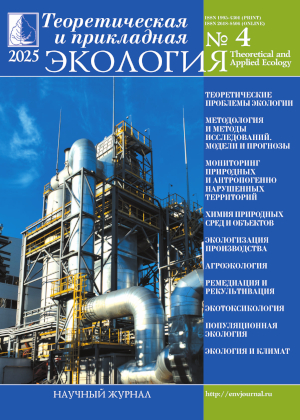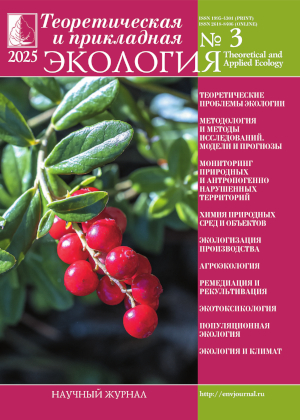 ISSN 1995-4301
ISSN 1995-4301(Print)
ISSN 2618-8406
(Online)
Online version of the journal
|
Study of the efficiency of water treatment from ammonium ions by a calcined sorbent from ash-and-slag waste |
||||
| T.G. Korotkova, A.M. Zakolyukina, S.A. Bushumov | ||||
| Section: Ecologization of industry |
||||
| Experimental studies of sorption on water treatment from ammonium ions by a calcined sorbent based on ash-and-slag waste from thermal power engineering have been carried out. The calcined sorbent was obtained by calcining samples of ash-and-slag from coal combustion at the Novocherkassk State District Power Plant at a temperature of 600 оC for 30 min. The sorption capacity of a sorbent with a dose of 2.0 g per 50 mL of a model solution, a stirrer speed of 200 rpm, pH 7, and sorption time from 10 to 180 minutes was studied. The influence of the initial concentration of model solutions with the content of ammonium ions 5, 20, 50 and 100 mg/L on the amount of adsorption and treatment efficiency was studied. The highest treatment efficiency of 60% was obtained for an initial concentration of ammonium ions in a solution of 20 mg/L. Processing of experimental data was carried out according to the models of pseudo-first, pseudo-second-order and intra-particle diffusion kinetics. The best description of the experimental data was obtained using the pseudo-first order model, which has the highest value of the coefficient of determination. The adsorption equilibrium in the system ammonium ions – calcined sorbent was studied for the initial concentration of ammonium ions in solution: 5, 20, 30, 50, 100, 200, 300 mg/L. Processing of experimental data on equilibrium was carried out on the basis of two-parameter adsorption isotherms: Langmuir, Freindlich and Temkin. The value of the coefficient of determination according to the Langmuir isotherm is the largest R2 = 0.9904. Dependences between the cleaning efficiency at adsorption equilibrium and the initial concentration of ammonium ions in solution for the system ammonium ions – calcined sorbent are obtained. With an increase in the initial concentration of ammonium ions in the solution, the treatment efficiency at low initial concentrations increases, and decreases with increasing concentration. | ||||
| Keywords: treatment efficiency, ammonium ion, sorbent, ash-and-slag waste |
||||
| Link | ||||
| Article published in number 4 for 2023 DOI: 10.25750/1995-4301-2023-4-099-109 |
||||
|
|
36, Moskovskya street, Kirov, 610000, Editorial Board "Theoretical and Applied Ecology." Phone/fax: (8332) 37-02-77 e-mail: envjournal@vyatsu.ru The journal was founded in 2007 |
||||||




 Select viewing options
Select viewing options